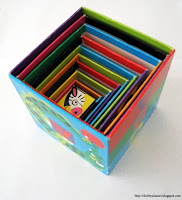 |
| Sample pictures from the Apple Index below. |
Apple Artifacts & Art for Enhancing Lesson Plans:
- DIY Apple Card Games for Early Learners - It's time for apple season and the fun games and activities teachers share in the classroom.
- "Apple of My Eye" Valentines - Apple themes for Valentine's Day Fun!
- Print and Play An Apple Themed Color Sort Game - Young children can learn their colors: yellow, green and red by sorting apples.
- Stringing Beads at The Early Leaning Center - Start preschool small motor coordination by stringing beads.
- Scrumdiddlyumtious Apple Quince Treats and Recipes! - Moms and Dads can bake apple recipes in the kitchen with their kids to celebrate Fall.
- "A" was once a counting apple pie too! - Kids can craft an apple pie pocket and insert paper apples while counting them.
- Craft a Half-Eaten Home! - fun with cotton balls, pom-poms and paper plates
- All 'descendants' of Johnny Appleseed - How to make dolls from dried, carved apples.
- Links to More Than 100 Apple Crafts!
- Craft an Apple Lacing Card from A Paper Plate - make your own lacing, paper plates for little students
- String a Wormy Apple Craft - A fun craft to develop small motor skills and well, eating to be honest.
- "Oats and Wild Apples," by Frank Asch - Preschool through 2nd graders will love this book for Fall.
- "Ten Red Apples," by Pat Hutchins - counting book for kindergarten
- Johnny Appleseed Praise and Worship - old-fashioned theme for Fall
- Who was Johnny Appleseed? - Do you know Johnny Appleseed was a real person? He was also a missionary...
- The "Act" of Tearing Develops Small Muscles - tearing idea along with pattern links
- Around The Apple Tub - people and animals still play this game?
- Old Apple Recipes - recipes over 100 years ago
- Template of Apples On A Branch - free, drawn pattern for teachers and students
- Apple Math Game for Bulletin Boards - explanation and template
- Cut, color and assemble sweet Adam and Annie Apple paper dolls... - These paper dolls come with free patterns.
- A Summer Snowstorm! ". . . all our pretty orchard grass, is hidden out of sight.''
- Little Apple Rhymes and Poems - '' I plucked pink blossoms from mine apple-tree...''
- The Apple Rhyme - "In my garden grows a tree''
- The Planting Of The Apple Tree - ''Come, let us plant the apple-tree!"
- Apple Time - multiple short rhymes
- At Apple-Pickin' Time - ''When a frosty carpet sparkles in the hollow...''
- The Cider Mill - I can hear your music still, creaking, creaking...''












